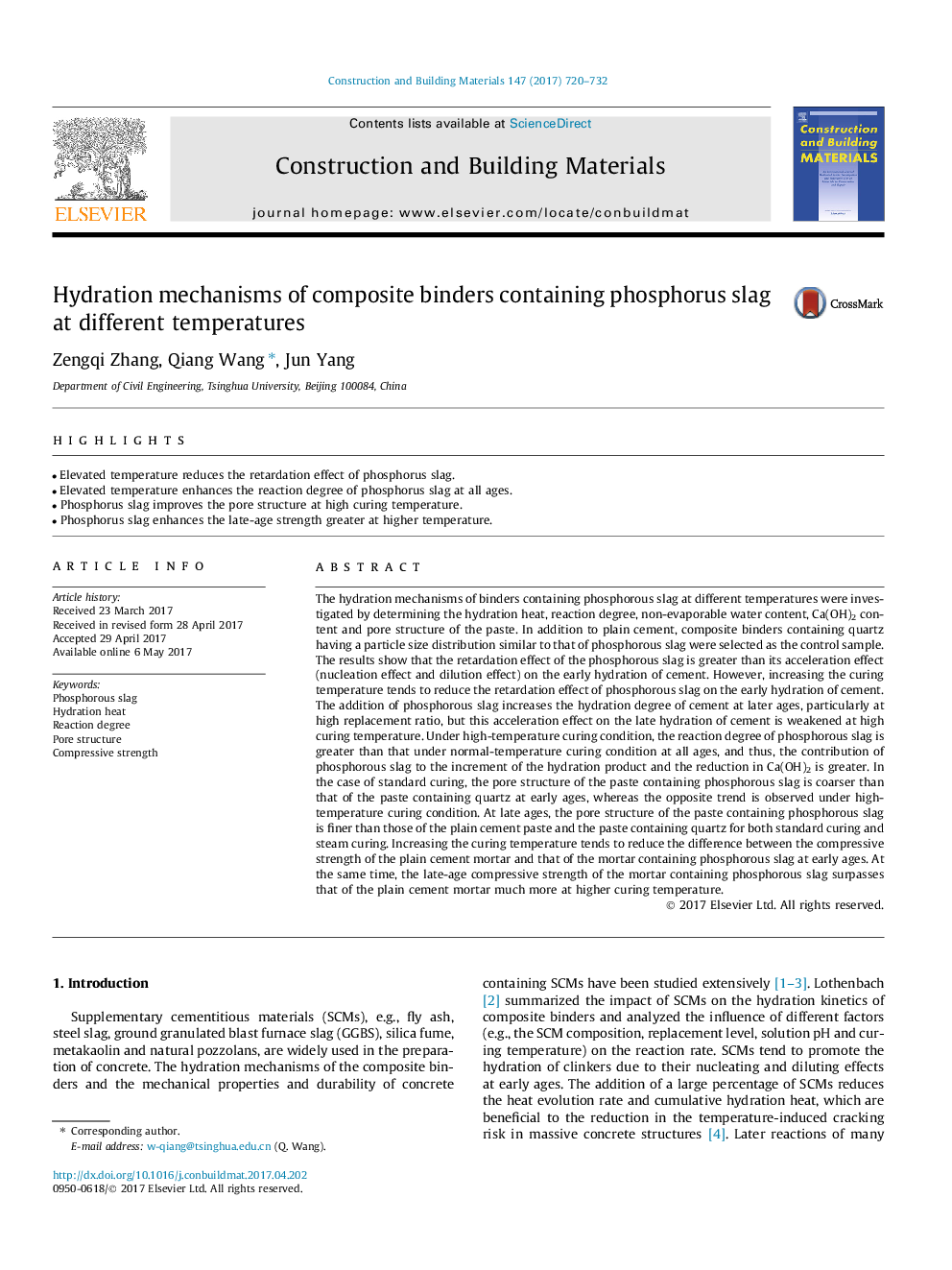| کد مقاله | کد نشریه | سال انتشار | مقاله انگلیسی | نسخه تمام متن |
|---|---|---|---|---|
| 6480607 | 1428759 | 2017 | 13 صفحه PDF | دانلود رایگان |
- Elevated temperature reduces the retardation effect of phosphorus slag.
- Elevated temperature enhances the reaction degree of phosphorus slag at all ages.
- Phosphorus slag improves the pore structure at high curing temperature.
- Phosphorus slag enhances the late-age strength greater at higher temperature.
The hydration mechanisms of binders containing phosphorous slag at different temperatures were investigated by determining the hydration heat, reaction degree, non-evaporable water content, Ca(OH)2 content and pore structure of the paste. In addition to plain cement, composite binders containing quartz having a particle size distribution similar to that of phosphorous slag were selected as the control sample. The results show that the retardation effect of the phosphorous slag is greater than its acceleration effect (nucleation effect and dilution effect) on the early hydration of cement. However, increasing the curing temperature tends to reduce the retardation effect of phosphorous slag on the early hydration of cement. The addition of phosphorous slag increases the hydration degree of cement at later ages, particularly at high replacement ratio, but this acceleration effect on the late hydration of cement is weakened at high curing temperature. Under high-temperature curing condition, the reaction degree of phosphorous slag is greater than that under normal-temperature curing condition at all ages, and thus, the contribution of phosphorous slag to the increment of the hydration product and the reduction in Ca(OH)2 is greater. In the case of standard curing, the pore structure of the paste containing phosphorous slag is coarser than that of the paste containing quartz at early ages, whereas the opposite trend is observed under high-temperature curing condition. At late ages, the pore structure of the paste containing phosphorous slag is finer than those of the plain cement paste and the paste containing quartz for both standard curing and steam curing. Increasing the curing temperature tends to reduce the difference between the compressive strength of the plain cement mortar and that of the mortar containing phosphorous slag at early ages. At the same time, the late-age compressive strength of the mortar containing phosphorous slag surpasses that of the plain cement mortar much more at higher curing temperature.
Journal: Construction and Building Materials - Volume 147, 30 August 2017, Pages 720-732
